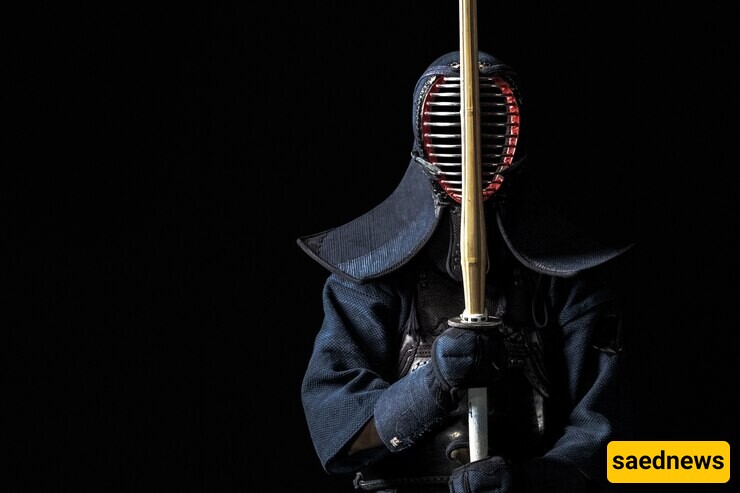SAEDNEWS: The origins of Kendo date back to the development of various styles of Kenjutsu, or samurai swordsmanship techniques. These techniques, refined over centuries, form the foundation of the martial art known as Kendo.


Kendo (Japanese: 剣道, meaning "The Way of the Sword") is a modern Japanese martial art derived from the traditional samurai swordsmanship, Kenjutsu, of Japan. The sword used in Kendo is made of bamboo (shinai), and practitioners wear protective armor known as Bōgu. Combining martial art techniques with the intense physical activity of modern sports, Kendo challenges the mental and physical capabilities of its practitioners. Those who practice Kendo are called Kendoka.
Kendo's roots trace back to Kenjutsu techniques developed over centuries by samurai warriors. The Kata exercises practiced today in Kendo evolved from the training drills used by Kenjutsu warriors. These drills were refined over time to form the basis of modern Kendo.
Originating from Kenjutsu, Kendo draws heavily on the principles and teachings of Zen Buddhism. During the Kamakura period (1185–1333 AD), Kendo was taught primarily to samurai. By the 18th century, the use of shinai and bōgu was introduced for safer training. Over time, Kendo was incorporated into secondary and university curriculums and is now a compulsory subject in many Japanese schools.
Kendo aims to:
Train both the mind and body through rigorous and correct practice.
Develop a strong spirit and progress in the art of Kendo.
Foster honest communication with others.
Respect human dignity and politeness.
Cultivate one’s character throughout life.
Ultimately, Kendo encourages love for one’s country and society, the advancement of culture, and the promotion of peace and prosperity among all people.
The roots of Kendo date back to the Muromachi era (1336–1568), during which samurai swordsmanship schools flourished. With ongoing civil wars, swordsmanship became essential for self-defense against feudal armies. These practices persisted through the Tokugawa period (1600–1868).
Real swords posed serious risks during training, prompting 18th-century masters to introduce safer equipment, such as shinai (bamboo swords) and bōgu (protective armor).
After World War II, Kendo was banned temporarily, as it was perceived as a symbol of militarism. However, in 1952, Kendo reemerged as a sport with a universal message, emphasizing culture rather than combat. Today, Kendo serves as a guide for educating younger generations while preserving its martial arts roots.
The Bōgu is the protective gear worn by Kendo practitioners, consisting of:
Men (面): Head protector
Dō (胴): Chest protector
Kote (小手): Hand, wrist, and forearm protectors
Tare (垂れ): Lower body protector
Suneate (脛当て): Shin protector (specific to Naginata, another martial art)
In Kendo, practitioners utilize five main striking techniques, each associated with specific protective gear:
Men: The head protector, which also signifies a strike area.
Dō: The chest protector, targeted during strikes.
Kote: The hand and wrist protector, also a key striking area.
Each piece of gear serves both as protection and as an integral element of Kendo’s technique and training.

